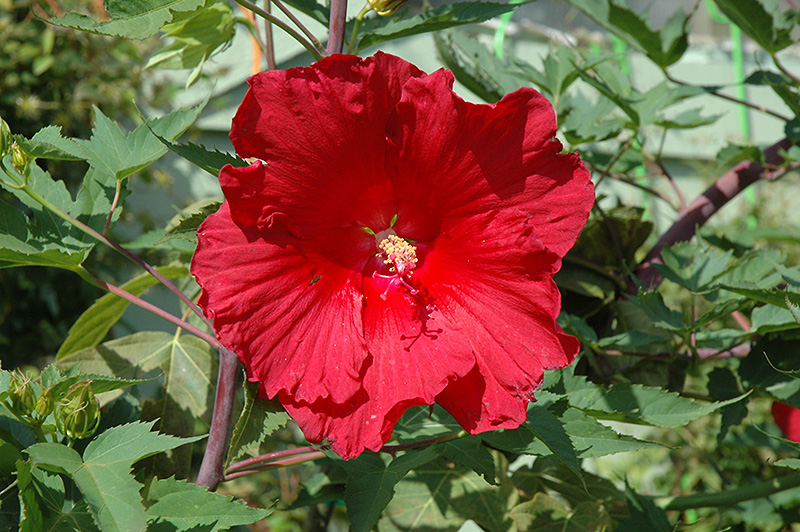Height: 4 feet
Spacing: 3 feet
Sunlight:
![]()
![]()
Hardiness Zone: 4b
Other Names: Rose Mallow, Hardy Hibiscus
Description:
This bold garden perennial features very showy red flowers and dark-red eye and finely cut, dark-green leaves with burgundy markings; ideal for the mixed garden border or in mass; do not allow to dry to wilting point
Ornamental Features
Fireball Hibiscus features bold red round flowers with dark red eyes at the ends of the stems from mid summer to early fall. Its attractive large deeply cut narrow leaves remain green in color with distinctive deep purple veins throughout the season.
Landscape Attributes
Fireball Hibiscus is an herbaceous perennial with an upright spreading habit of growth. Its relatively fine texture sets it apart from other garden plants with less refined foliage.
This plant will require occasional maintenance and upkeep, and should be cut back in late fall in preparation for winter. It is a good choice for attracting butterflies and hummingbirds to your yard. Gardeners should be aware of the following characteristic(s) that may warrant special consideration;
- Insects
- Self-Seeding
Fireball Hibiscus is recommended for the following landscape applications;
- Accent
- Mass Planting
- General Garden Use
- Naturalizing And Woodland Gardens
Planting & Growing
Fireball Hibiscus will grow to be about 4 feet tall at maturity, with a spread of 4 feet. When grown in masses or used as a bedding plant, individual plants should be spaced approximately 3 feet apart. It grows at a fast rate, and under ideal conditions can be expected to live for approximately 5 years. As an herbaceous perennial, this plant will usually die back to the crown each winter, and will regrow from the base each spring. Be careful not to disturb the crown in late winter when it may not be readily seen!
This plant does best in full sun to partial shade. It requires an evenly moist well-drained soil for optimal growth, but will die in standing water. It is not particular as to soil type or pH. It is highly tolerant of urban pollution and will even thrive in inner city environments. Consider applying a thick mulch around the root zone in winter to protect it in exposed locations or colder microclimates. This particular variety is an interspecific hybrid. It can be propagated by cuttings; however, as a cultivated variety, be aware that it may be subject to certain restrictions or prohibitions on propagation.
A NetPS Plant Finder tool


